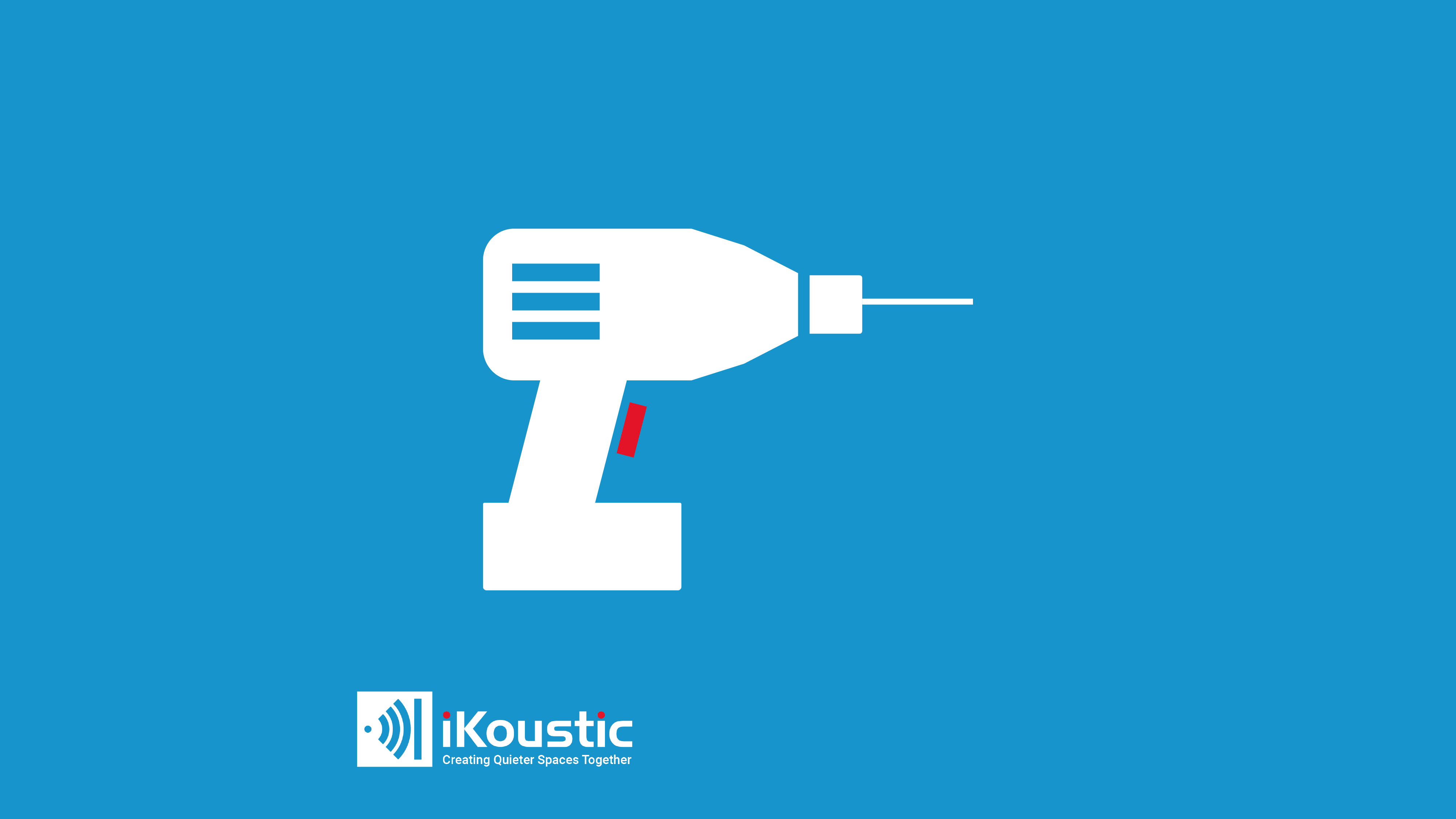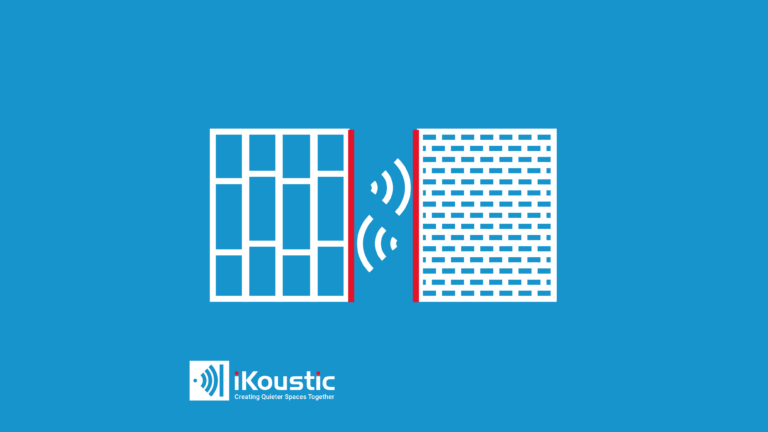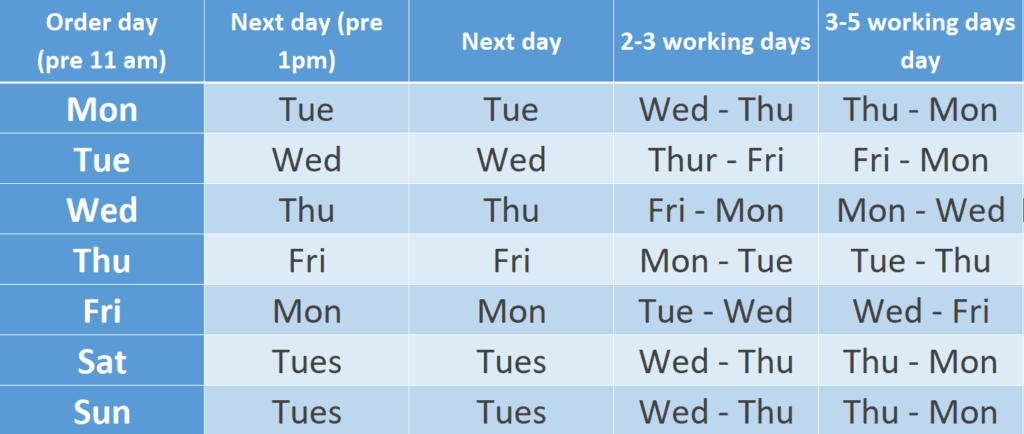Acoustic barriers for construction sites and HVAC units
Acoustic barriers are a necessary part of construction sites, but it can be difficult to find an acoustic barrier with true acoustic qualities. The HSE states that the construction industry is “a high-risk industry for noise related ill health.” This is because much of the work that needs to be done on building sites involves the operation of heavy machinery. This often produces noise levels that are damaging with prolonged exposure.
| Task | Average Noise Level (LEP,d) |
| Carpentry | 92 |
| Concrete 1) chipping/drilling 2) floor finishing 3) grinding 4) concrete worker | . 85+ 85 85+ 89 |
| Driving a dumper or roller | 85+ |
| Formwork | 92 |
| Labouring: 1) concrete pour 2) digging/scabbling 3) shovelling hardcore 4) shuttering 5) angle grinding/cutting | . 97 100 94 91 90-100 |
| M&E general installation | 89 |
| Piling 1) operator 2) worker | . 85+ 100+ |
| Reinforcement work | 86 |
UK regulations for noise levels on construction sites
The figure above lists many of the common tasks associated with construction work as well the average noise level they produce. The noise levels listed above are starkly contextualised to the proceeding graphic taken from The Control of Noise at Work Regulations 2005.

For clarity, I’ll briefly define some of the terminology used here.
- An “action level” is a threshold of noise exposure, where upon crossing, employers are required to take certain steps to mitigate the damaging effects of noise on auditory health.
- The term “lower exposure action value” describes the noise level that, when exceeded as an average over a day or week, an employer has to provide auditory health training as well as provide hearing protection. The lower exposure action value is 80dB.
- The term “upper exposure action value” describes the noise level that, when exceeded as an average over a day or week, an employer has that “reasonably practicable measure to reduce noise exposure.” This may take the form of investing in quieter equipment, reducing the amount of time an employee is spending on a noisy task, or having soundproofing materials installer where appropriate. The lower exposure action value is 85dB.
- The exposure limit value is simply the averaged noise level threshold that cannot be met or exceeded.
- A-Weighting and C-weighting simply refer to different ways or organising and presenting noise data – “The A-weighting curve is used extensively for general purpose noise measurements but the C-weighting correlates better with the human response to high noise levels and therefore noise induced hearing loss.” – Sound level Frequency-weightings Terms and Definitions – acoustic-glossary.co.uk
How to reduce construction site noise levels
As it can be plainly seen, all of the activities listed by the HSE meet or exceed 85db, with many exceeding the daily/weekly exposure limit value. Based off of this, it would be the responsible decision of any construction site to mitigate these noise exposure levels in any way possible.
Along with quieter machinery and a conscious delegation of noisy tasks, an appropriate solution would be the use of acoustic barriers.
Acoustic barriers for HVAC units
Recently we’ve seen a marked uptick in interest acoustical barriers for HVAC units, specifically in the commercial and industrials sectors. This makes sense as many large HVAC units can be a consistent noise source; emitted around 60dB.
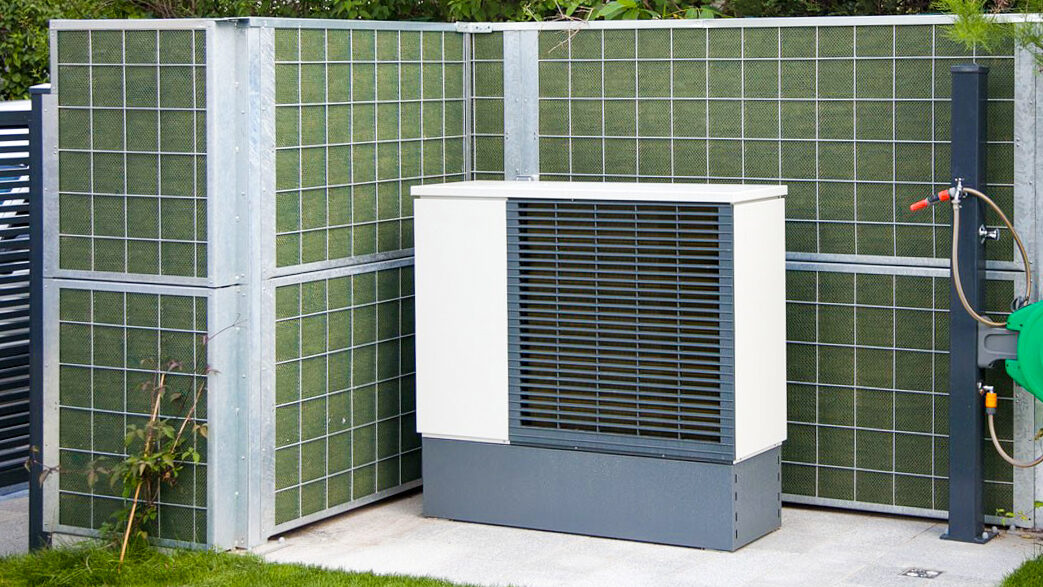
A simple solution to this problem is to erect a configuration of acoustic fencing around the unit. We’ve even carried out on-site testing for this exact solution! This method often yields a significant reduction to the noise irritant.
If you own an HVAC unit or work in M&E, take at this blog on the acoustic considerations for air source heat pumps.
How an acoustic barrier works
Acoustic barriers work by mitigating noise from machinery, high traffic areas and inside industrial plants. This acoustic barrier has been designed by industry leading acoustic insulation experts, Rockwool, and the durable materials used ensure this barrier has a long service life.
Most acoustic barriers simply aim to insulate against sound. This essentially amounts to using a high mass barrier to stop sound travelling through it. Whilst sound insulation is important, it’s easy to see why this method alone could be unhelpful in some contexts. A lot of these acoustic barriers tend to be made of timber or a similar material that is often highly reflective in respects to sound. This means that the barrier will prevent sound travelling through it but will also reflect that sound back at the source. If you or one of your employees is creating the noise, then this is unhelpful in regard to yours and your employees’ auditory health.
NoiStop essential is different to most other acoustic barriers in that as well insulating against sound (prevent sound from crossing a barrier), it also absorbs sound. If sound is absorbed, then it can’t be reflected or dispersed anywhere else; it puts a full-stop in noise.
In this instance, sound absorption is achieved by using a layer of high-density porous mineral wool at the centre of the acoustic fence panel. This material is often used in walls and cavities to provide sound absorption and is a moisture resistant material.
This means that NoiStop fencing improves the noise levels on both sides of the acoustic barrier.
How to install an acoustic barrier
To install an acoustic barrier, you will need a small team of local installers who can make quick work of this job! All it takes is the spacing and fixing of the posts, as with an ordinary fence, and then drilling the panels into the posts. Being a durable acoustic barrier, our posts are steel and come in different sizes dependant on the over height of the acoustic barrier. We also have installation guides available as well as over the phone support.
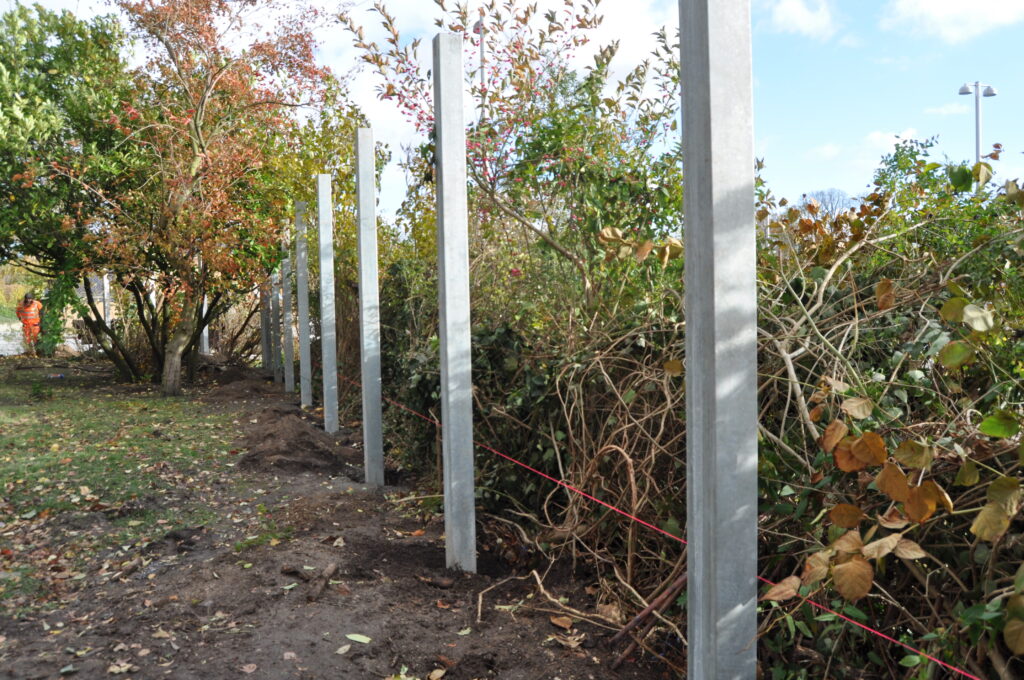
What are acoustic blankets?
Acoustic blankets are, in essence, weighted blankets. By being relatively dense and by containing absorptive materials, these products often aim to deaden a given rooms’ sound field. By their very nature, acoustic blankets are inherently lightweight in comparison to soundproofing panels or acoustic barriers. This makes them particularly convenient for temporary and rental uses.
However, it also means that they are not as acoustically performative as they are often claimed to be. In real terms, the best you can expect from purchasing or renting acoustic blankets would be a slight attenuation of the higher frequency noise as well as some treatment of the reverb within the room.
Do acoustic blankets work?
Acoustic blankets don’t work like acoustic barriers or panels. Firstly, it’s important to understand the relationship between mass and sound reduction. There is a relationship between the sound reduction provided by acoustic barriers and weight of said barrier. This is called the mass law. Mass law states that for every doubling of the weight of the material, one can expect a 6 dB increase in the transmission loss.
Even given that acoustic blankets are made from materials that are relatively dense compared to those used to construct traditional blankets, there is simply not enough mass present to properly impede the transmission of sound.
The next part to consider is the Quarter Wavelength Rule. This guideline relates to the thickness needed of a material to successfully absorb a frequency. To put it simply, the range of sounds that exist can be broken down into frequencies. Considering a constant medium (air), each frequency has a corresponding wavelength (length of the physical sound wave that travels through the air); increasing the wavelength lowers the frequency, and vice versa. The Quarter Wavelength Rule asserts that in order for an absorbent to successfully absorb a given frequency, it needs to have a thickness that is at least one quarter of that frequency’s wavelength.
Acoustic blankets are much slimmer than most other sound proofing barriers and thusly, will be much less successful in absorbing low frequencies, which have much longer wavelengths.
Acoustic blankets for construction sites?
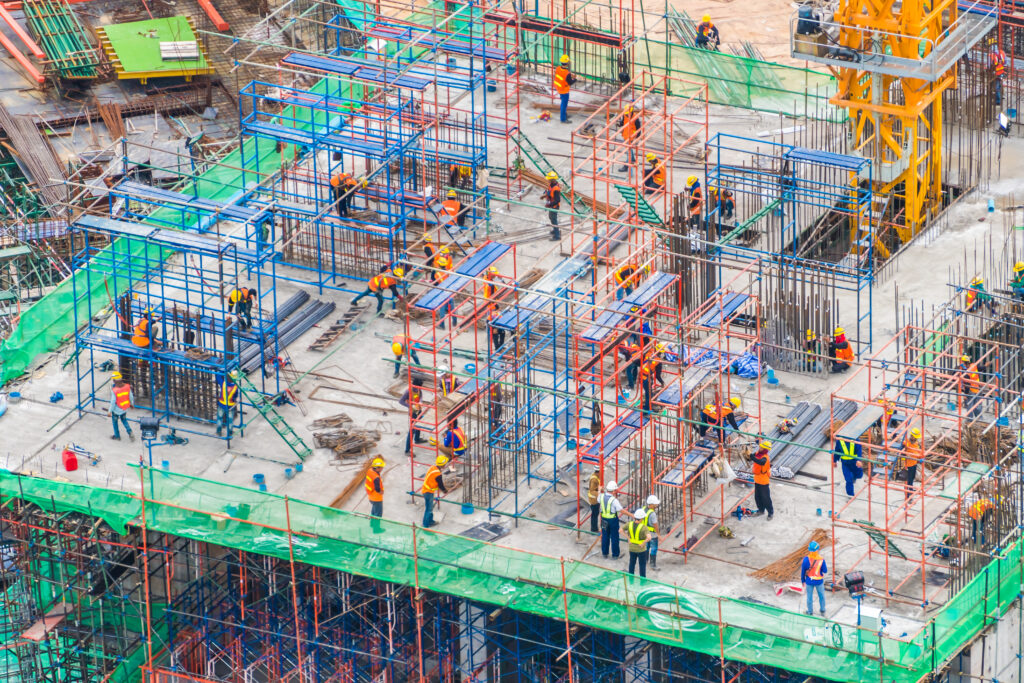
Given the context of application in a construction site, the acoustic blanket is revealed to be entirely unfit. These work sites are home to the operation of large and loud machinery, that will need some serious heavy duty sound treatment to properly improve the noise problems.
Given that NoiStop fencing uses thick slabs of high-density mineral wool to provide both sound insulation and sound absorption, you can feel confident knowing your work-site noise issues will be improved for both the people on-site and pedestrians passing by.
Which acoustic barrier for construction sites?
We offer two types of acoustic barrier each with different focus. The one you need is largely dependent on a variety of factors regarding your specific requirements. The key benefits of NoiStop Essential are as follows:
- It is the most cost-effective system in the NoiStop Range.
- It is available with a decorative wooden cladding.
- It matches the acoustic performance of NoiStop Steel.
Overall, NoiStop essential tends to be more applicable to projects with tighter budgets, and a larger focus on aesthetic considerations, whilst still needing a top-notch acoustic performance.
If this doesn’t sound like you, the benefits of NoiStop Steel may be more applicable:
- Due to the use of thicker and stronger posts, it can be constructed up to 6m high, whereas we’d only recommend NoiStop Essential up to about 3.6m tall.
- As opposed to NoiStop Essential’s 1m wide door, you can get a double door with NoiStop Steel that is 2m wide. We find this is particularly valuable to the M&E and construction sectors, as these groups often need to move large pieces of equipment and machinery, which a wider door helps to facilitate.
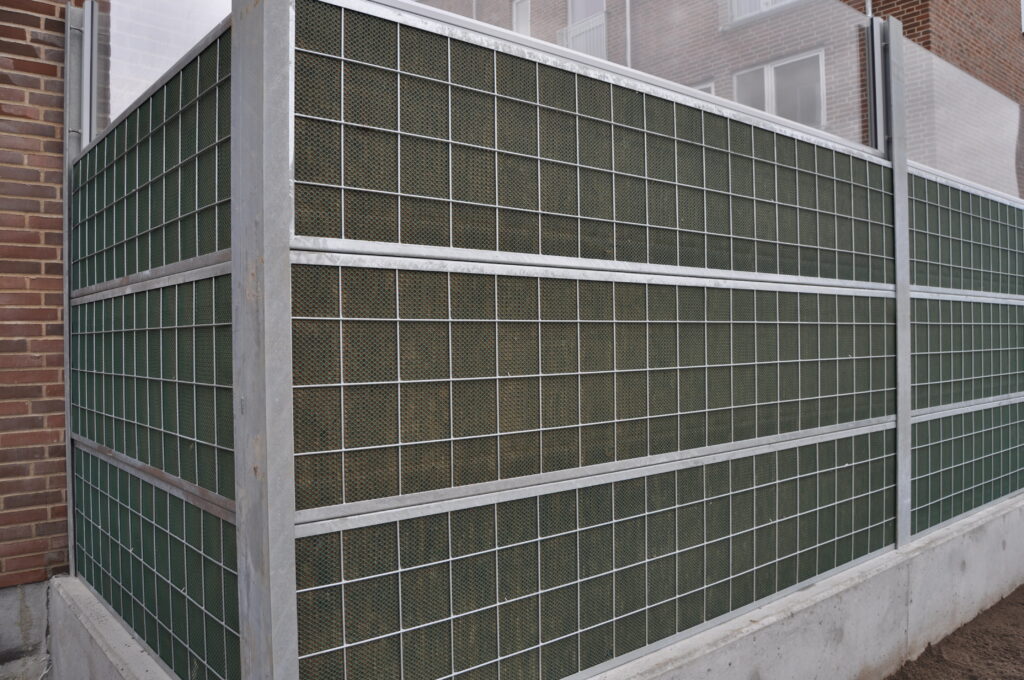
Whether it’s Essential or Steel you’re after, feel free to give us a call or email in, and we’ll advise/quote.
Acoustic gates and roofs for barriers
- If the door and double door are insufficient, it may be a possibility for us to work with a local fabricator to put together a gate. It’s worth noting that this will impact landed cost given that the item will be bespoke.
- An acoustic enclosure covering both sides and roof is in the works, but a year or so from full release. A similar approach with fabricators can be taken. In this instance, it may be important to consider airflow; an HVAC unit needs a certain amount of airflow and covering all side too tightly could compromise this.
How much are acoustic barriers?
- Without posts 1m high is £116.25, 2m high is £232.50.
- With posts would be £235.25, 2m high is £351.50.
- An exact price for project can be very easily attained; just email or phone in and one of our dedicated acoustic barrier specialists will put together a full quote. This can be turned around quickly using our in-house NoiStop Essential Calculator.
Price for heavy duty acoustic barriers
- Without posts, 1m high is £124.50 and 2m high is £249.00.
- With posts, 1m high is £383.50 and 2m high is £508.00.
- An exact price for project can be very easily attained; just email or phone in and one of our dedicated acoustic barrier specialists will put together a full quote.
How high can an acoustic barrier be?
- We can offer NoiStop Essential for the height of 3.6m. However, it should be with stronger posts than the regular size, e.g., we would quote the use of NoiStop Steel 12x12x0,4cm posts for this height.
- Using posts at least one third longer than the fence height will be a good choice.
Can acoustic barriers be above 3 meters?
- We have seen solutions of up to 6 meters, but it would be wise for an engineer to do the statics and evaluate if and how it can be done (special/stronger steel posts etc.)

